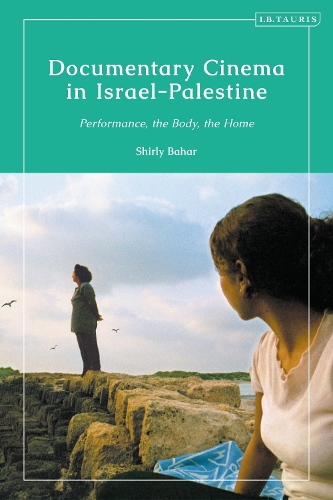
Documentary Cinema in Israel-Palestine: Performance, the Body, the Home
(Paperback)
Available Formats
Publishing Details
Documentary Cinema in Israel-Palestine: Performance, the Body, the Home
By (Author) Dr Shirly Bahar
Bloomsbury Publishing PLC
I.B. Tauris
26th January 2023
United Kingdom
Classifications
Tertiary Education
Non Fiction
Documentary films
Social discrimination and social justice
070.18
Physical Properties
Paperback
248
Width 156mm, Height 234mm
Description
Alongside the upsurge in violence that came with the downfall of the Oslo era in the early 2000s, a new wave of documentaries emerged that centered on Palestinians and Mizrahims (Jews of Middle Eastern origins) historical and lived experiences of pain and oppression across Israel-Palestine and beyond. The documentaries challenge the systemic removal of self-represented Palestinian and Mizrahi pain from mainstream media and the public realm dominated by Israel. . This book explores how Palestinians and Mizrahim perform their long endured pain on screen. Analysing key documentary films from the first decade of the 2000s, Shirly Bahar offers a nuanced reading of the cinematic documentary corpus emerging from Israel-Palestine, as well Palestinians and Mizrahims different and unequal yet interrelated forms of oppression and racialization under Israeli rule. While pain sets them apart, the documentary representations of pain of Palestinians and Mizrahim invite us to consider reconnection by focusing on the very relational nature of pain.
Reviews
Documentary Cinema in Israel-Palestine is a major contribution to understanding 21st-century transnational film history. Looking at key documentary films by Arab and Mizrahi filmmakers living within the contested borders of Israel-Palestine, Shirly Bahar develops an argument for the vital place of documentary within contemporary politics and identities. Deeply attuned to the process by which documentary invokes and provokes intimacies across various boundariesfilmmaker, subject, audience; spaces and places; languages; among themBahar makes a case for documentary as a philosophical, as much as visual and aural, form. Through close readings of several crucial films from the first decade of this century, Bahar expounds on the ways in which documentary, as witness to damaged bodies in devastated places, makes visible the ravages state violence wreaks on truth, language and landscape. Violence against Israeli and Palestinian Jews and Arabs (and Bahar makes clear that the simplistic dichotomy Israeli Jews/Palestinian Arabs is part of the erasure of history performed on these bodies and places since 1948) finds its way into the films by Arab and Mizrahi filmmakers through lenses focused on reenacting pain and retelling memory. Bahars insights reveal how occupation and war, on a large scale, and naming, property, even home restoration, on a more personal level, are grasped within the varieties of encountersat once awkward, hostile and intimatemade possible by documentary cinema. In this profound study, we see how documentary and its critics mediate a uniquely performative and affective politics in Israel-Palestine, but also elsewhere and everywhere. -- Paula Rabinowitz, University of Minnesota, USA
Author Bio
Shirly Bahar teaches in the School of Visual Arts at Columbia University in New York, USA, and is the co-director of the Tzedek Lab network. She received her PhD from New York University's Hebrew and Judaic Studies Department.
